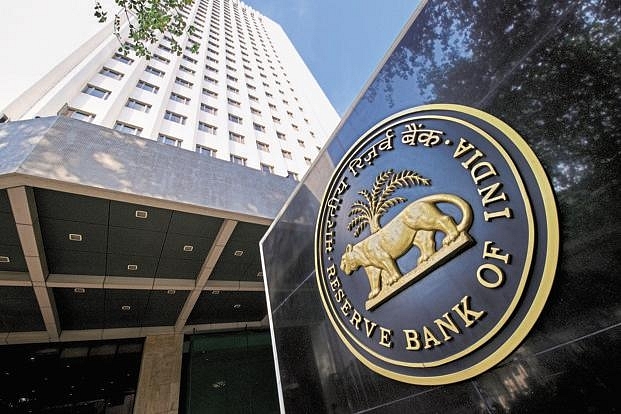
PMC Bank Crisis: I Am An Ex-Banker And Here’s What I Think Should Be Done To Set Things Right
A bank cannot go into crisis overnight. There would have been early warning signs. These signals needed to have been acted upon.
On 24 September 2019 evening, an RBI press release dropped a bomb announcing that depositors of Punjab and Maharashtra Cooperative Bank Limited (PMC Bank), one of the top cooperative banks, will not be allowed to withdraw beyond Rs 1,000 (One thousand only) from any deposit account held with the bank.
It was a bolt from the blue. As per the annual report of the bank for the year 2019, the bank had a Capital Adequacy Ratio of over 12 per cent, net NPAs of 2 per cent, and a net profit of around Rs 100 crore and rated ‘A’ in audit classification.
The fundamentals looked good. The bank had several distinctions to its credit. As per press reports, even RBI Officers’ Co-operative Society had placed fixed deposits of Rs 105 crore with the bank.
The RBI notification stated that the directions under sub-section (1) of Section 35A read with Section 56 of the Banking Regulation Act, were necessitated on account of major financial irregularities, failure of internal control and systems of the bank and wrong/under-reporting of its exposures under various off-site surveillance reports to RBI that came to the Reserve Bank’s notice recently.
In the last one month after the upheaval, RBI has subsequently relaxed the withdrawal limits to Rs 10,000 and then to Rs 25,000 and as of now it stands at Rs 40,000.
The PMC crisis, which has claimed several lives as reported in sections of the media, raises some fundamental structural issues, which need to be analysed and addressed.
First and foremost — Why should the depositors of a bank be penalised by not being allowed to withdraw their own hard-earned money for the misdeeds of the bank management?
Impose heavy penalty and/or initiate criminal proceeding against the existing management and run the bank through a new administrator. But what is the logic behind put withdrawal restrictions on depositors under 35A, which essentially is a safety measure for the interest of depositors.
The second question — When the RBI puts restrictions under 35A, the liquidity position of the bank is at a precarious stage and hence, rationing of withdrawal is justified on the ground that each depositor can have at least a basic level of withdrawal.
The migration of a healthy bank to such disability cannot be sudden. There would be signs of migration. These early warning signals need to be acted upon.
When liquidity drops to such alarming lows, it is expected that the bank would have defaulted in its regulatory obligations in respect of Cash Reserve Ratio (CRR) and Statutory Liquid Ratio (SLR).
Suggestion: The RBI should notify that each bank that fails to meet its CRR/SLR obligation must disclose it in the Bank’s website so that depositors can be alerted. RBI too in its website should disclose names of such erring banks
Third and most important question — when there is a solvency/liquidity crisis, what can be done?
Suggestion: Open up a liquidity support window — an advance from Deposit Insurance Corporation to the Bank through an RBI appointed administrator at least up to 90 per cent of the insured coverage, instead of waiting for the Bank to be liquidated and the amount passed on to the liquidator after a lengthy claim process, which extends up to years.
And the next question — What should be the level of deposit Insurance, which stands at present at Rs 1 lakh, which was fixed in 1993. As per information available in the Deposit Insurance and Credit Guarantee Corporation (DICGC) Annual Report, the percentage of insured deposit to assessible deposit, which was 73.3 per cent in 1975, has dipped to 28.1 per cent now in 2019.
Suggestion: With an average annual inflation of 5 per cent added to the base year 1993, the present limit would be Rs 3.56 lakh, notwithstanding greater savings formation, which has increased from 25 per cent to 30 per cent as a percentage to GDP. Keeping these factors in mind, the deposit insurance has to go up at least to Rs 4 lakh.
Finally, like the Insolvency and Bankruptcy Code (IBC), which prescribes 330 days maximum for a resolution, there has to be a deadline for liquidation or revival and settlement of all claims of depositors, when a bank fails.
The time frame should be still shorter, as there are not many complexities in such a process, and in order to bring in a sense of urgency.
Delayed payments is essentially denied payment — and people lose access to Medicare, education, ceremonies like weddings for which small depositors save.
As per reports, the present crisis has taken a toll of multiple lives. Let the institutional framework in respect of redressal of depositors’ grievances be strengthened so that in future, no life is lost for the misdeeds of a bank.
The dual regulation of cooperative banking, Separate regulation for financial entities such as creation of a resolution trust and risk-based pricing of insurance premium will be addressed in a subsequent article.
(Views expressed are personal)